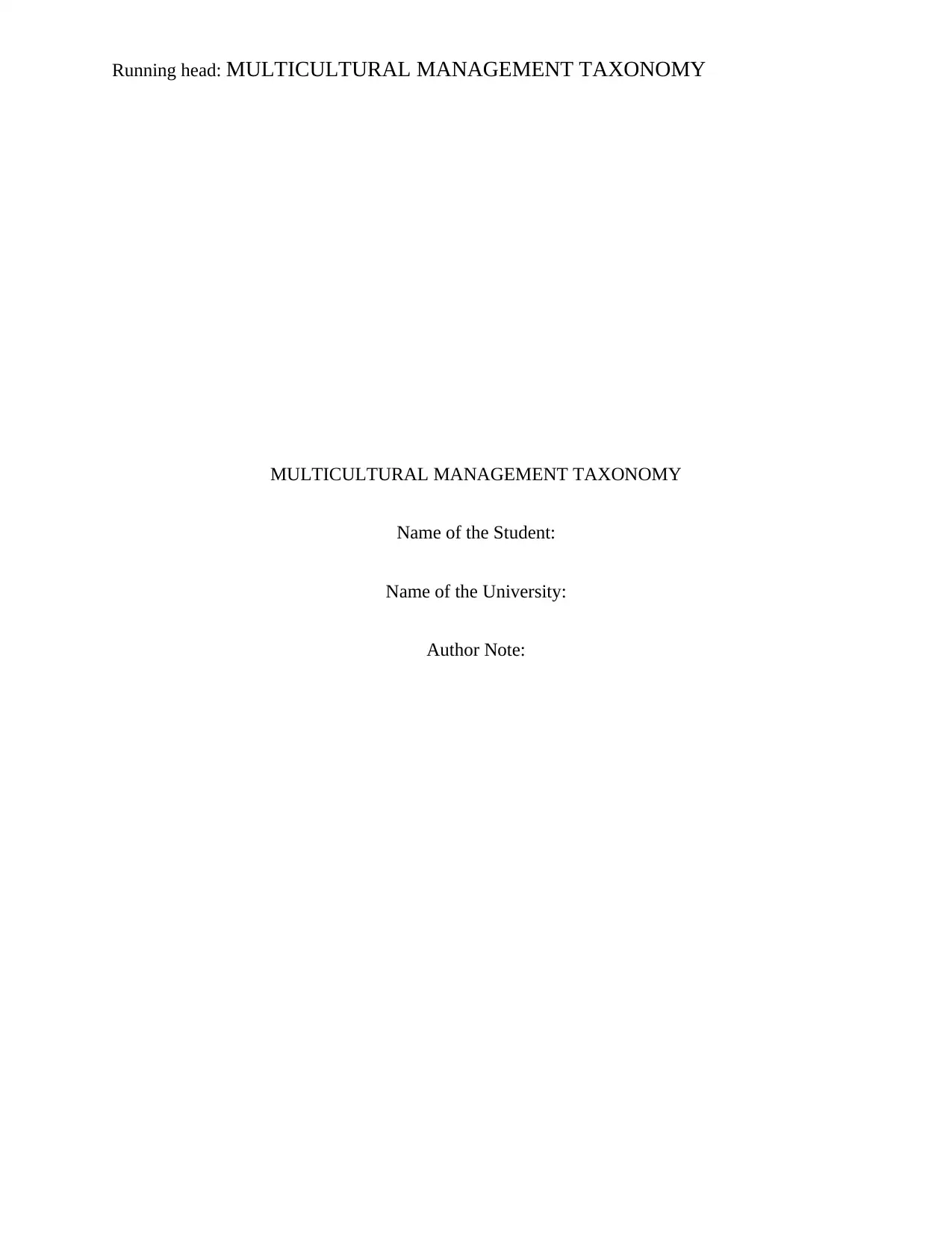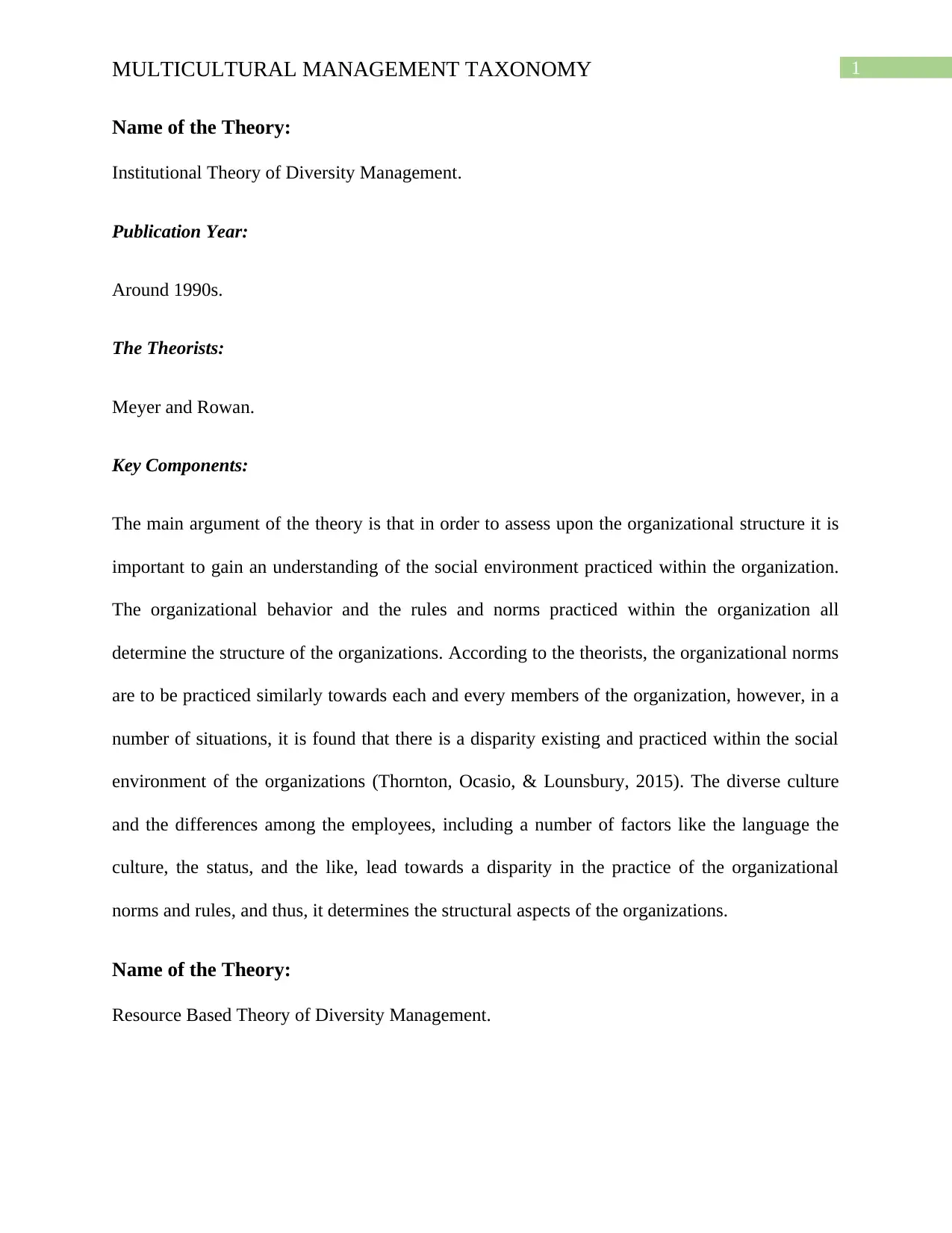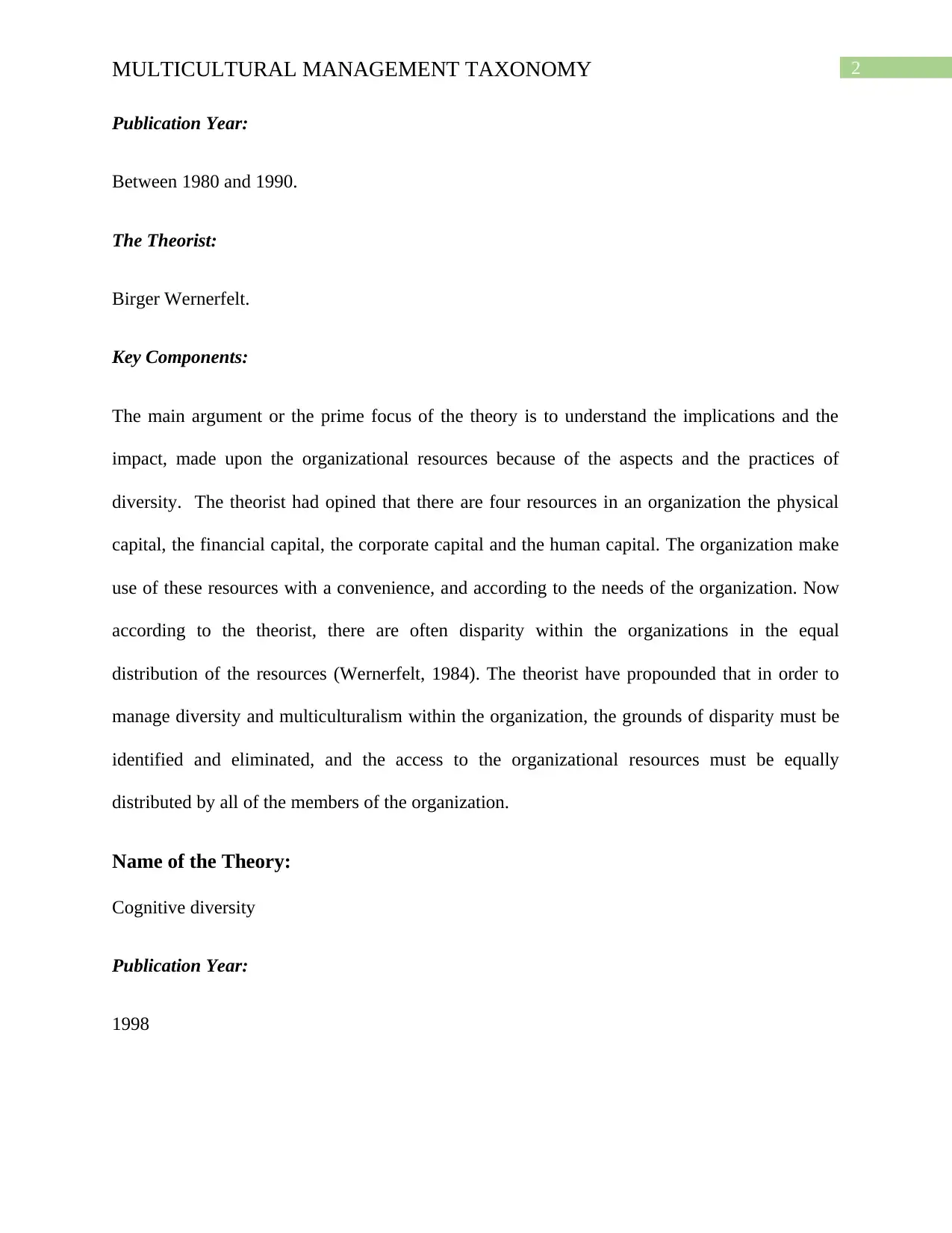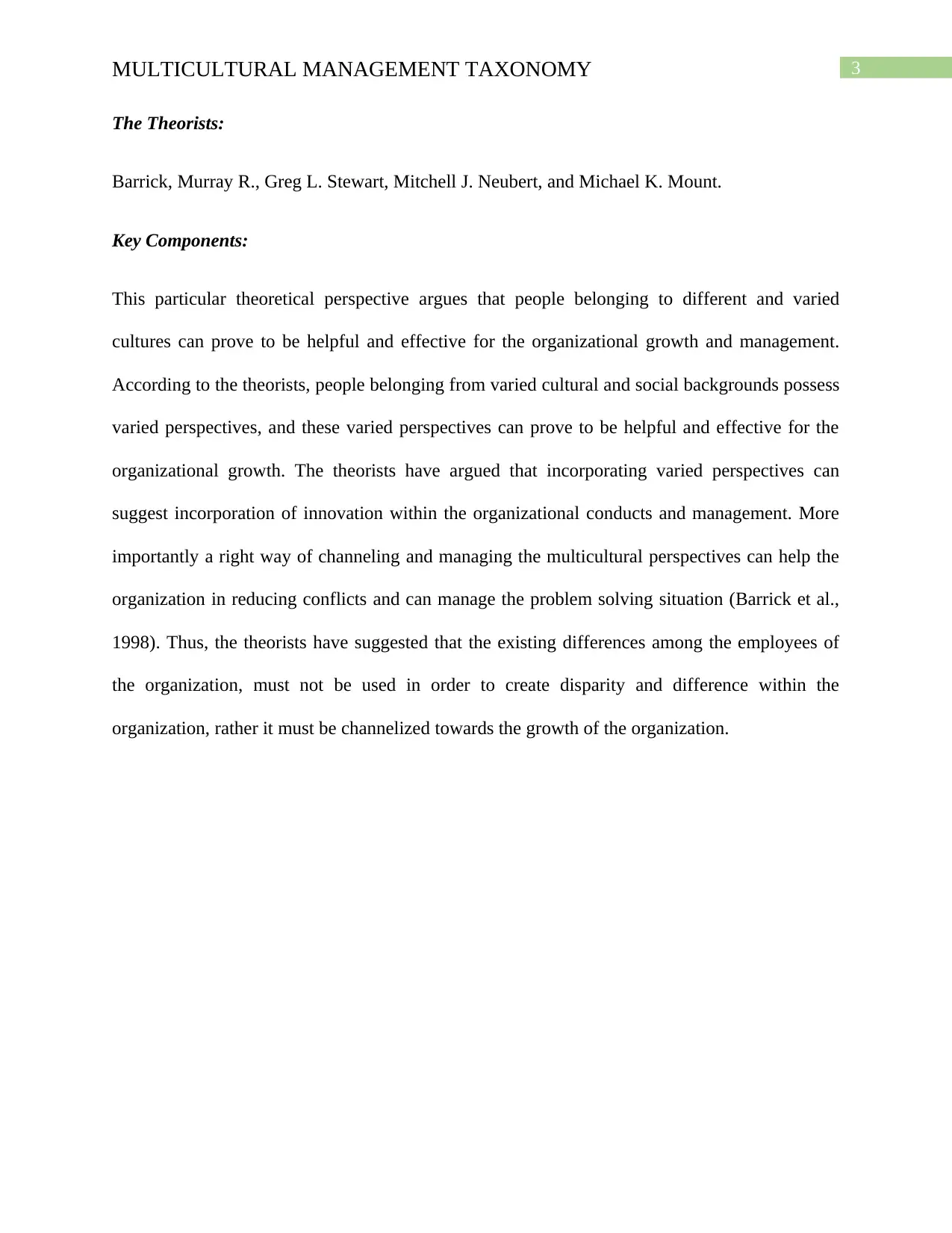Multicultural Management Taxonomy: Theories and Components
VerifiedAdded on 2022/08/18
|5
|712
|18
Homework Assignment
AI Summary
This assignment presents a taxonomy of three foundational theories in multicultural management: Institutional Theory of Diversity Management, Resource Based Theory of Diversity Management, and Cognitive Diversity. For each theory, the document includes the name, publication year, the theorist(s), and the key components. Institutional Theory, by Meyer and Rowan, emphasizes understanding the social environment within an organization to assess its structure. Resource Based Theory, by Birger Wernerfelt, focuses on the impact of diversity on organizational resources, advocating for equal distribution. Cognitive diversity, by Barrick et al., argues that varied cultural backgrounds can benefit organizational growth. The assignment provides concise summaries of each theory's core arguments and implications for managing multiculturalism within organizations, supported by cited references.
1 out of 5











![[object Object]](/_next/static/media/star-bottom.7253800d.svg)